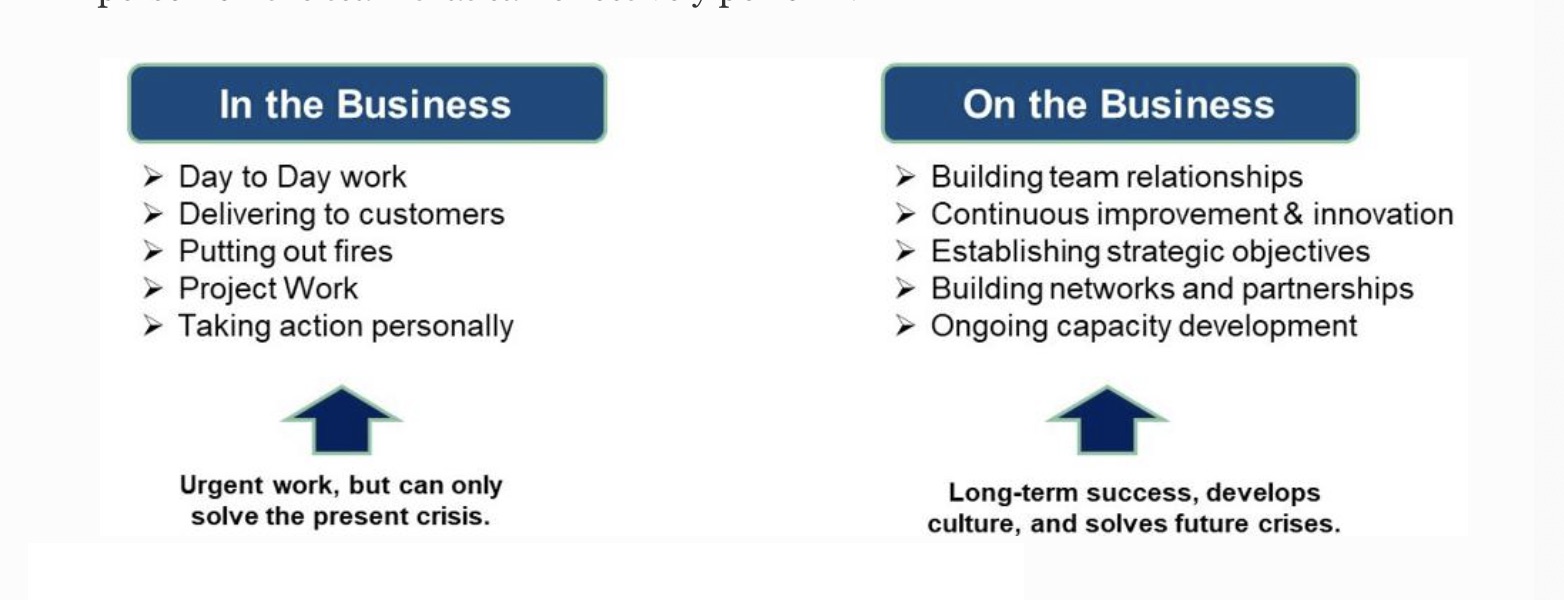All successful leaders possess one universal, critical skill: they can masterfully strategize and harness two of the most valuable resources available to any one person, organization, or entity: Time and energy.
A few decades ago, it was so much easier to find space—physical /mental/ intellectual—to do the logical parsing. These days? Not so much.
Barraged by 'round-the-clock emails, crises that (may or may not) require immediate responses, and time demands that include an endless succession of Zoom meetings, today’s leaders—according to a recent Forbes article—are having more and more difficulty finding time and energy to execute the most critical responsibility of their role: harnessing time and energy.
However, by employing the following three practices, leaders can free themselves up to do what they do best—accomplishing their most important goals while staving off distractions in the process.
THREE PRACTICES TO PRACTICE:
1. Evaluating "In the Business" vs. "On the Business" Activities
For the uninitiated:
“In the Business” activities are the day-to-day operational aspects of any leadership role. (i.e., putting out fires.)
“On the Business” activities are the more strategic responsibilities—those focused on long-term success, establishing culture, developing employees, and innovation. In other words, the really important activities.
These items, however, are those that only the leader can determine.

2. Learn To Say No
Sound trite? OR unrealistic? Remember this: “If everything is a priority, then nothing is a priority.”
These days, everything is urgent. Who has time to step back and meaningfully prioritize? YOU DO. Do you have a full afternoon to play “pros and cons?” Of course not. But you can’t afford to not take stock.
“Leaders must be responsive to urgent requests,” states the Forbes article. "[But not] at the expense of moving forward their most important goals.”
The most effective leaders learn to use their “No”s to protect their yeses.
Doing a deeper dive (minutes) to determine true “urgency” is worth it. Good leaders can learn to quickly categorize activities as: time value or time suck. And great leaders focus on the former—foregoing those projects, tasks, and requests that steal their energy and focus away from accomplishing their most important priorities.
3. Lead Through Coaching
Most leaders become leaders through a three-step modus operandi:
- Problem-solve
- Get it done
- …NEXT!
However, it’s not uncommon for even the most seasoned leaders to become mired in Step 1 – because, by nature, they’ll jump in to solve every challenge presented to them.
Reminder: True leadership “is all about empowering others, developing employees, and building strong relationships for ongoing team success."
Thankfully, Rutgers Professional Science Master’s program (PSM) has a wealth of resources and programs designed to build and hone students' leadership skills—those necessary to succeed in STEM-based, science-intensive industries. From the required, life-changing Communications and Leadership course to the signature Executive Coaching program available to students starting at orientation.
Leadership isn’t easy. Thankfully, whether you’re managing a Fortune-500 company or an army of one, at Rutgers PSM there are numerous tools to make your leadership methods more effective and manageable.
And everyone needs these skills to move forward in today’s world. Because we each lead our own ships, after all.